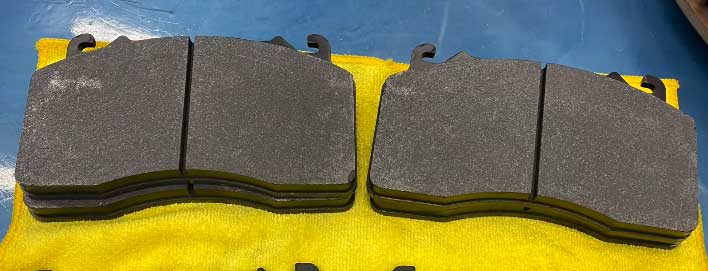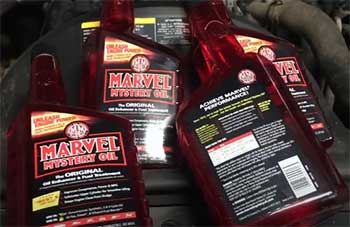In the world of high-performance brake pads, two names often come up: Hawk DTC 60 and Hawk DTC 70. With an impeccable reputation, Hawk Performance is a trusted name among racing enthusiasts.
Both the DTC 60 and 70 are designed to provide superior braking performance but in somewhat different ways. Let’s dissect each one and understand which one is better for you, depending on your driving style.
A Brief Comparison Table
| Feature | Hawk DTC 60 | Hawk DTC 70 |
| Friction Coefficient | Approx. 0.60 | Approx. 0.70 |
| Cold Bite | Excellent | Moderate |
| Heat Range | Good | Excellent |
| Fade Resistance | Good | Excellent |
| Wear Rate | Faster | Slower |
| Dust Production | Higher | Lower |
| Brake Modulation | Superior | Good |
| Initial Bite | Good | High |
| Rotor Wear | Moderate | High |
Unraveling the Hawk DTC 60 Brake Pad
Hawk’s DTC (Dynamic Torque Control) 60 is an intermediate-grade track pad known for its impressive friction and heat management. It’s the go-to choice for racers due to its progressive engagement, meaning it gradually grips the rotors.
This helps to avoid any initial jolts and ensures a smoother brake application.
- Pros of Hawk DTC 60

One of the biggest advantages of the DTC 60 is its excellent cold bite.
This means it requires very little heat to achieve maximum effectiveness, a feature highly appreciated by racers driving in colder conditions.
Another noteworthy feature of the DTC 60 is its high friction coefficient.
A higher friction coefficient translates to more stopping power, meaning you get better control over your vehicle.
The DTC 60 is also known for its remarkable brake modulation, allowing drivers to better control the brake application force.
- Cons of Hawk DTC 60
The primary downside of the DTC 60 is that it tends to wear down faster due to its high friction coefficient. This could lead to more frequent brake pad replacements.
Also, some drivers find the DTC 60’s dust production somewhat excessive, which might require regular cleaning.
Also Read: Are SHW Brake Rotors Worth It?
Diving into the Hawk DTC 70 Brake Pad
The Hawk DTC 70 is the bigger sibling of DTC 60, known for its higher heat resistance and temperature range. This brake pad was designed to perform under the most demanding conditions.

- Pros of Hawk DTC 70
The primary advantage of the DTC 70 is its high-temperature stability. This brake pad can withstand extreme heat, making it an excellent choice for vehicles that spend a lot of time on the track.
Additionally, the DTC 70 has a superior lifespan compared to the DTC 60. It’s engineered to last longer, which means fewer brake pad replacements in the long run.
The DTC 70 also offers enhanced initial bite. It grips rotors quicker than the DTC 60, allowing for aggressive braking in high-speed situations.
- Cons of Hawk DTC 70
The DTC 70 requires a higher operating temperature to function at its best. It may not be as effective in colder conditions or short races where maximum heat can’t be achieved.
Moreover, due to its aggressive nature, the DTC 70 can be harsh on rotors, causing them to wear out quicker.
Key Differences Between Hawk DTC 60 and DTC 70
Understanding the key differences between Hawk DTC 60 and 70 brake pads can greatly influence your buying decision.
While both pads are excellent performers, the nature of your driving significantly determines the most suitable choice for you. Here’s an in-depth look at how they differ in various aspects:
- Friction Coefficient and Cold Bite
Starting with the basics, the Hawk DTC 60 has a friction coefficient of approximately 0.60, which is the source of its name. This high friction level ensures excellent stopping power and control.
It also possesses a remarkable cold bite, allowing the brake pad to deliver maximum performance even without being warmed up first.
The DTC 70, on the other hand, has a higher friction coefficient of around 0.70. However, unlike the DTC 60, it does not exhibit the same level of cold bite. This means that it takes a bit of warming up before it reaches its peak performance.
While this may not be an issue in high-speed or long-duration races where brakes naturally heat up, it could be a concern in colder conditions or shorter races.
- Heat Range and Fade Resistance
The Hawk DTC 70 outshines the DTC 60 when it comes to heat range and fade resistance. While the DTC 60 is a great performer, it starts to fade when subjected to extremely high temperatures.
In contrast, the DTC 70 is engineered to withstand higher temperatures and provide consistent performance throughout. This higher heat range and fade resistance make the DTC 70 an excellent option for demanding races that involve aggressive and frequent braking.
- Wear and Tear
A significant difference between the DTC 60 and 70 relates to their wear rates. The DTC 60 tends to wear faster due to its high friction coefficient. Although it offers excellent performance, this quicker wear means more frequent pad changes, which can increase maintenance costs over time.
The DTC 70, designed with a harder compound, wears slower than the DTC 60, even under aggressive braking conditions. This longer lifespan makes it a cost-effective choice for regular track users, despite the slightly higher upfront cost.
- Dust Production
Dust production is another area where these two brake pads differ. The DTC 60, due to its higher friction coefficient, produces more dust compared to the DTC 70.
Although this is a minor concern for most racers, it could require regular wheel cleaning to maintain the aesthetic appeal of the vehicle.
- Brake Modulation and Aggressiveness
While both pads provide excellent braking performance, the DTC 60 is known for its superior brake modulation, allowing for smoother and more gradual braking. This can be beneficial in providing precise control over the vehicle, especially in scenarios requiring nuanced braking.
The DTC 70, with its higher initial bite, is more aggressive. It quickly grips the rotors, allowing for rapid deceleration. However, this aggressiveness can lead to increased rotor wear, a potential drawback for some users.
Also Read: Comparison of Wilwood, Brembo And Baer Brakes.
Frequently Asked Questions (FAQ)
ER 1 (Extreme Race) and DTC 60 are both performance brake pads from Hawk. The main difference lies in their usage. ER 1 is specifically designed for extreme racing conditions and is known for its high friction, heat tolerance, and stability. DTC 60, on the other hand, is an intermediate-grade track pad, suitable for a broader range of applications due to its excellent cold bite and high friction coefficient.
The Hawk HP Plus is another performance brake pad that is popular among drivers. It has a broad operating temperature range, from 100°F to 800°F. This makes it an excellent option for both street and occasional track use.
Wrapping Up
In conclusion, when deciding between Hawk DTC 60 and 70 brake pads, it really boils down to your individual driving style and requirements. If you prefer smooth, progressive engagement and drive in colder conditions, the DTC 60 might be the best fit for you.
However, if you often find yourself in high-heat, aggressive racing scenarios and are looking for a brake pad with superior lifespan, the DTC 70 is likely your ideal choice. Remember, the right brake pad can make a huge difference in your driving experience and safety, so choose wisely.

